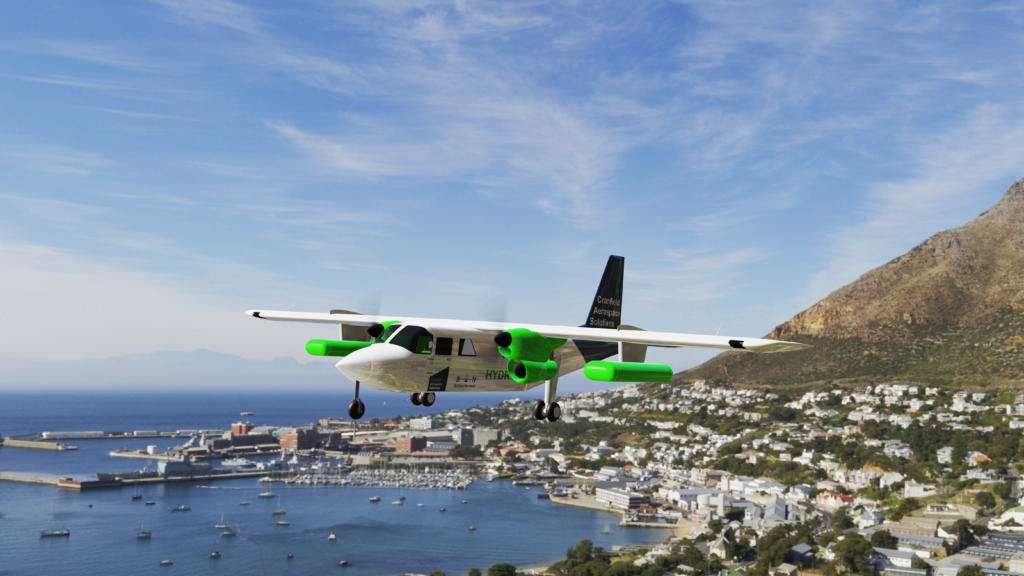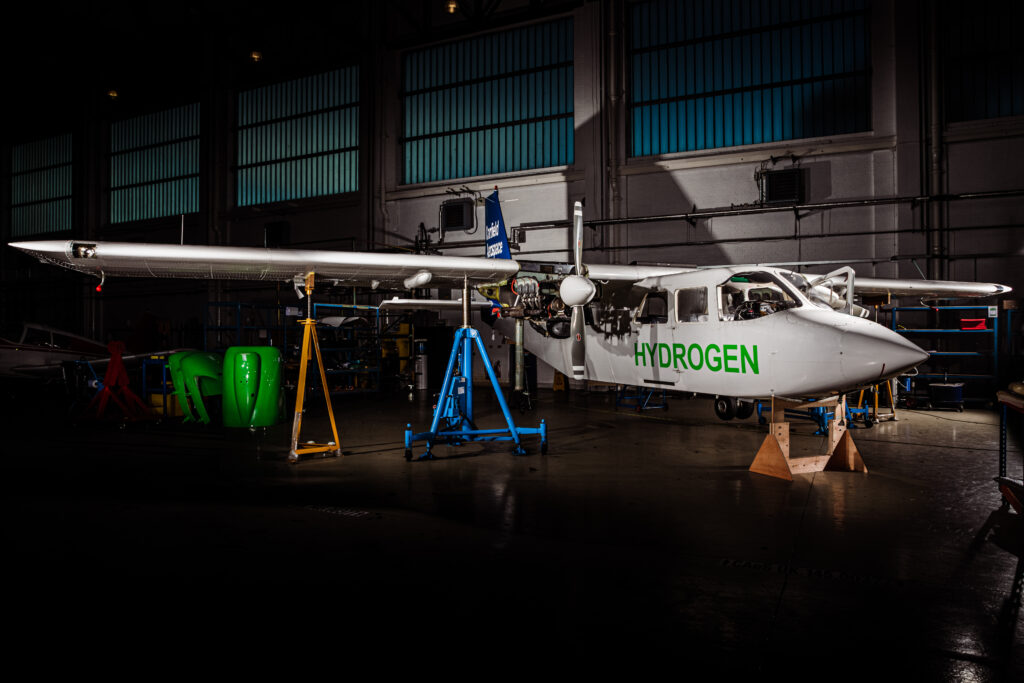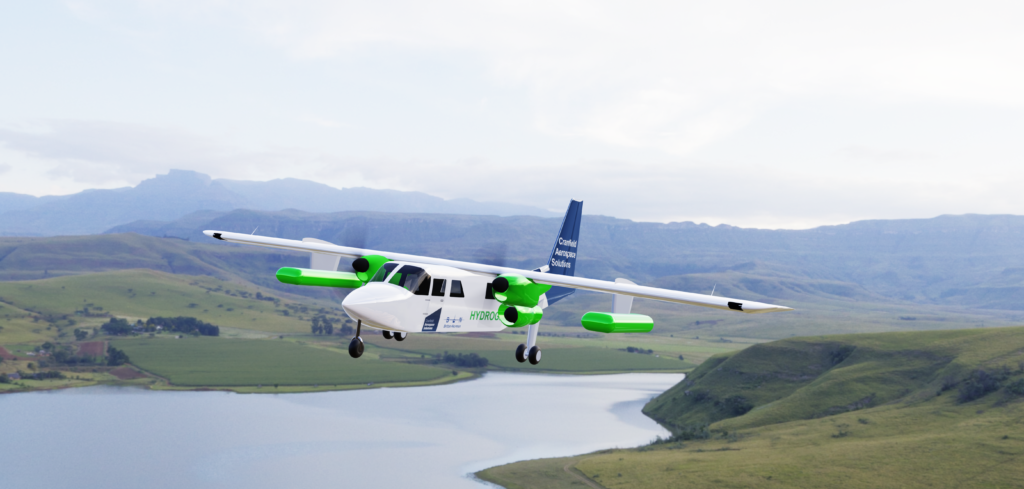 Jenny Kavanagh, chief strategy officer at Cranfield Aerospace Solutions, discusses how the company is converting traditional aircraft into hydrogen-powered vehicles as part of Project NAPKIN, which aims to enable the successful introduction of zero-carbon-emission flight into the UK domestic air travel market by 2040
Jenny Kavanagh, chief strategy officer at Cranfield Aerospace Solutions, discusses how the company is converting traditional aircraft into hydrogen-powered vehicles as part of Project NAPKIN, which aims to enable the successful introduction of zero-carbon-emission flight into the UK domestic air travel market by 2040
How was Cranfield Aerospace Solutions involved in Project NAPKIN?
Project NAPKIN – New Aviation, Propulsion, Knowledge, and Innovation Network – sought to model a future domestic aviation system in the UK using zero-carbon aircraft, i.e. how will airlines behave commercially when they have access to aircraft with hydrogen technology? Could it be profitable/commercially viable? To enable this, aircraft models were required that forecast the performance (range, fuel burn, number of passengers, direct operating costs, etc). Cranfield Aerospace Solutions’ (CAeS) involvement was to model several nine- and 19-seat aircraft to represent the early-adopter stage of the market.
Are hydrogen/battery-powered aircraft in operation/trials today?
Preliminary trials have been undertaken by hydrogen-powered, hybrid-electric and battery-powered aircraft. However, nothing is yet certified for passenger flight or proven to be commercially viable. However, work is progressing at a pace, and I fully expect to see aircraft with novel technologies in service by 2026-2027.

What work is being done by CAeS in this space?
CAeS is developing a conversion to an existing nine-seat aircraft, the Britten-Norman Islander. Our development will see the conventional piston engines replaced with a gaseous hydrogen fuel cell propulsion system whose only by-products are heat and water. We are doing this using our regulatory approvals [from the CAA] and 30 years’ experience in designing and certifying complex modifications to aircraft.
The work is important as we are working at the aircraft level and it is only when you bring the technologies (electric motors, hydrogen fuel cell systems, hydrogen tanks, etc) together at the aircraft level that you truly understand the problems that need to be solved and what the technology needs to achieve to be both certifiable (safe for passenger flight) and commercially viable. We intend to deliver the world’s first zero-emissions, regulatory certified passenger-carrying aircraft.
When do you believe zero-emissions aircraft will be commonplace in our skies?
To reach ‘commonplace’ status, in all reality you need to have single-aisle aircraft flying on hydrogen. As the technology stands today, it’s likely these aircraft will be powered by hydrogen combustion rather than fuel cells. Therefore, we’re not necessarily talking ‘zero-emissions’ but ‘zero-carbon’ aircraft, as combusting hydrogen (at least now) still produces nitrous oxide (NOX), albeit it less than conventional fuels. As to when, Airbus is planning to introduce its first hydrogen aircraft into service in 2035, so I’d expect them to be commonplace 2040+. Having said that, we expect there to be several zero-emissions aircraft in service starting 2026 and to be established and accepted on short routes by 2030.
How should airports prepare for this now?
It really starts with education. There is no one out there that currently has all the answers and so if an airport is serious about preparing for enabling hydrogen operations, they should familiarize themselves with the current state of thinking within the industry.
Just as currently there are no specific regulations against which to certify this new technology on aircraft, the industry has not yet created the standards, regulations and guidelines associated with dealing with hydrogen airside as an aviation fuel.
There is, however, a lot of collaborative work going on to progress this topic and a degree of literature available that could help airports gain a basic understanding. For example, in the UK, the Connected Places Catapult (CPC) Zero Emissions Flight Infrastructure (ZEFI) program has already published a ‘Blueprint for Zero Emission Flight Infrastructure’ and is continuing to lead programs to progress the topic, including working with standards agencies and the aviation authority in the UK.
Engagement of airports in these discussions and studies is critical as there is a limit to how much you can do working with hypotheticals – regulators need real use cases so I would encourage airports to engage with institutions such as the CPC in the UK, aircraft OEMs and other airports to explore the topic and help move it forward.
The advent of hydrogen aircraft is also inextricably linked to the opportunity posed by energy independence. If airports have the appetite, the land and the ambition, they could consider producing the fuel themselves as part of an airport decarbonization strategy, i.e. installation of a PV farm on/near the airport providing renewable electricity for the airport operations and that could be used to produce hydrogen for aircraft. This could be done by the airport itself as the investor, owner and maintainer of the assets or in partnership with an energy/fuel provider who would install and manage the assets as well as provide the electricity and hydrogen.
There are many options and opportunities but as I said at the start, it begins with education and needs to be included in the airport’s masterplan as soon as possible. Any plan to build infrastructure on the airport land will need to be discussed with the local planning authorities early in the process. If you’re a small/medium-sized airport wanting to operate the first hydrogen aircraft, then you need to start that process now.

Other than the refueling/charging changes, will handling a zero-carbon aircraft be any different from handling a current aircraft of the same size?
The differences will be driven by the fuel. Hydrogen behaves differently from kerosene and therefore all the current airline and airport operations need to be reviewed, along with current existing standards, regulations and guidelines from other industries that already use hydrogen, to establish the set of regulations for the aviation industry. There may be changes in storage requirements compared with kerosene (both for gaseous and liquid hydrogen), the PPE required, exclusion zones, etc. It’s all manageable – it’s just [there is] work to be done.
What more needs to be done now to accelerate the introduction of zero-carbon aircraft in the aviation sector?
Technology development requires investment money, [both in terms of] continued support from government grants for technology development as well as private investment. Aviation/aerospace is traditionally a difficult industry to secure investment for as it has a longer payback period than other technology industries.
There are also operational considerations: The standards, regulations and guidelines for airports, airlines and MROs to deal with hydrogen as an aviation fuel need to be agreed and published to give some clarity to airports and operators on what is entailed in preparing for the arrival of hydrogen aircraft.
Investment in (ideally) green hydrogen production facilities is needed to increase economies of scale, increase availability and decrease the price.
Subsidies may be required to kick-start the introduction, i.e. for operators’ and airports’ initial capital expenditure requirements through to fuel producers (e.g. the Inflation Reduction Act in the US).
The introduction of near-term targets for zero-emissions flight, e.g. all PSO routes to be zero-emissions by 2028, etc, will help drive the right activities and show governments’ intent, which in turn signals to industry and the investment community that there will be a market for the products that they will be investing in.
Is there anything else you would like to add?
We mustn’t forget the end user in all of this. Public acceptance of this technology will be vital, and work needs to start now, at government level, to assess the national mood and attitude toward zero-emissions aircraft so that the industry, together with government at local and national level, can start to work with the public on the topic.
You can read all about Project NAPKIN and the work being done to develop zero-emission flight in the UK in the April 2023 issue of Passenger Terminal World magazine.


